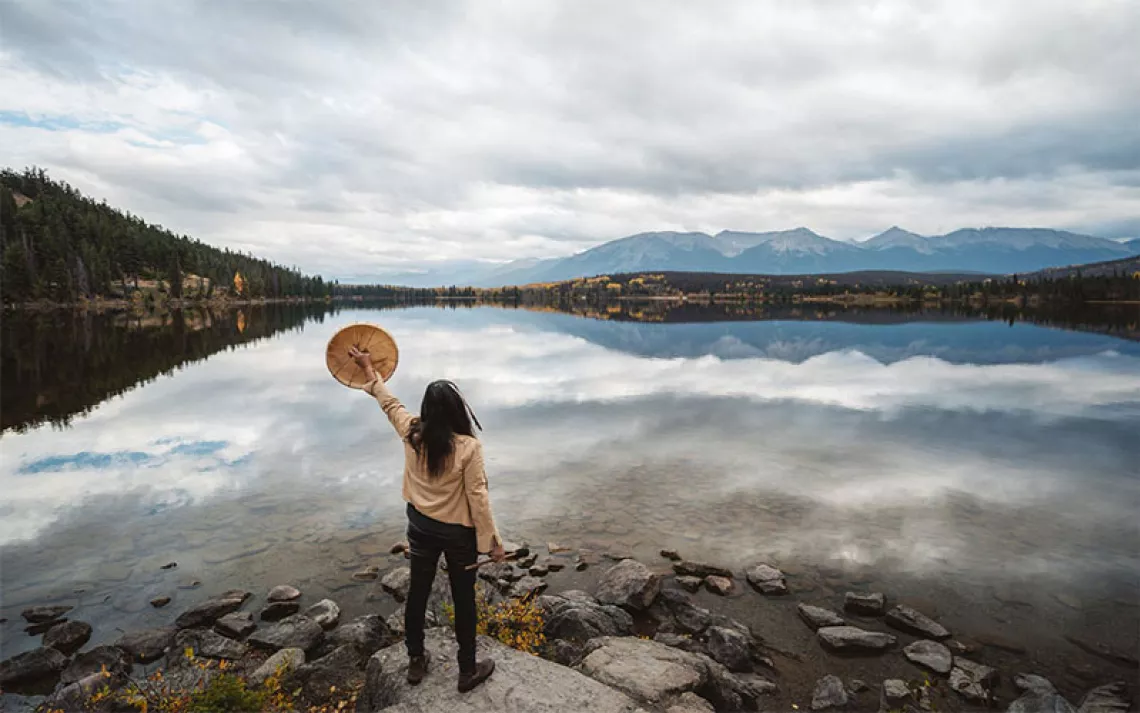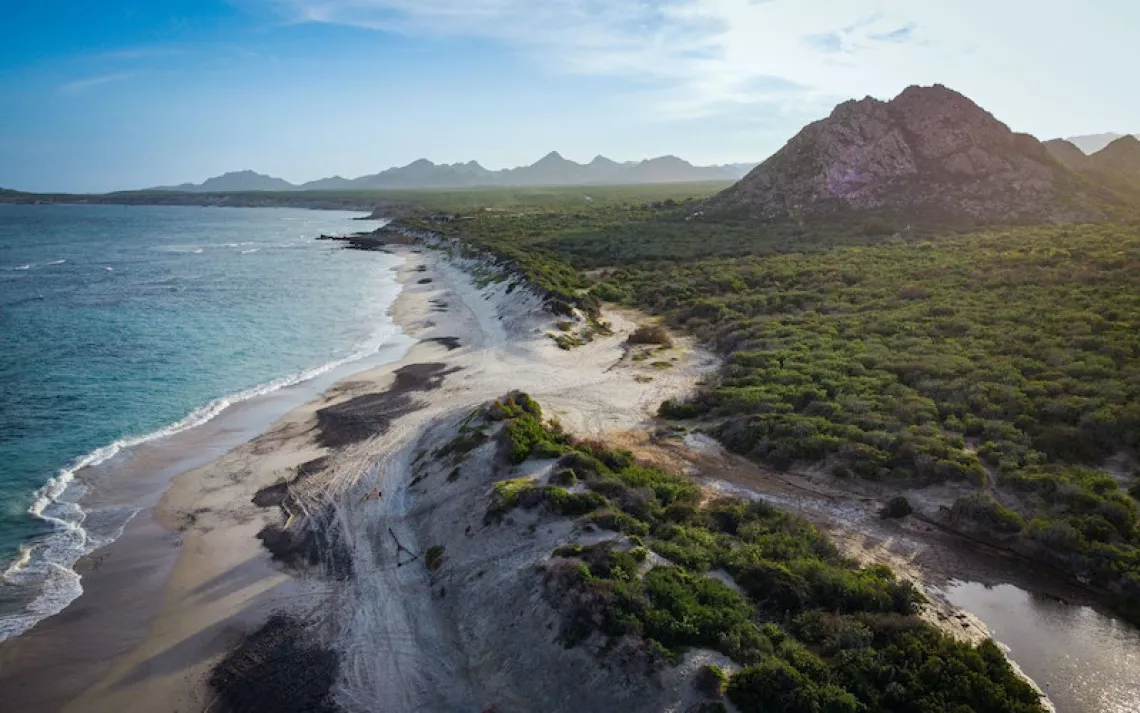Explore Geirangerfjord, Norway
Norway's coast is 15,500 miles long, but without the bays and fjords, it would be only 1,500

Farms from the Middle Ages cling to Geirangerfjord's banks. Norway's coast is 15,500 miles long, but without the bays and fjords, it would be only 1,500. | Doug Pearson/JAI/Corbis
BY THE TIME WE'VE CLIMBED the trail to camp, it's 9 p.m. and as bright as noon. The only buildings are remnants of a goat farm from the Middle Ages. The fields are overgrown now, and the structures are crumbling shells. After setting up tents, we collapse on grassy spots between rock piles, start talking about our aching tailbones and palms and shoulder joints. It's like our floating kayaks were a shared body, and now we all hurt in the same places.
On the water, we were cranky and haggard, but relaxing on land, people seem to settle into themselves. The sleekly bald, usually stoic guide drops his rubber skirt and stumbles over some rocks, laughing, toward a beaten wool sweater that warms him up. Karen yanks the twist tie from her ponytail, shakes her dark curls, and gives us a glimpse of her life as a designer in Boston, where she walks down Newbury Street with her hair bobbing.
"None of them knew the color of the sky." — Stephen Crane
We've spent this day the same way we spent the last five, in an endless drizzly film of paddle dunking and rubbing salt from our eyes. We're collectively worn out—a bunch of Americans traveling through the Norwegian June with our eyes glued open by caffeine. We know America's dark deserts with their stars on the firmament, but up here on the forehead of the world, there are no stars, and there is no night. The sun just skims the horizon before rising again.
Now the sun is low on the sky and sending a milky glow off the water. Everyone settles into dinner, spreading shrimp cheese on disks of bread and chasing it with squares of chocolate. I force down another bite of food before crawling into my tent. In a few hours the sky will sharpen and we'll slip down to sea, and we can call that another day. For now, I lie down, shut my eyes against the grainy light, and wonder how we'll have changed when we arrive home.
 The Magazine of The Sierra Club
The Magazine of The Sierra Club



